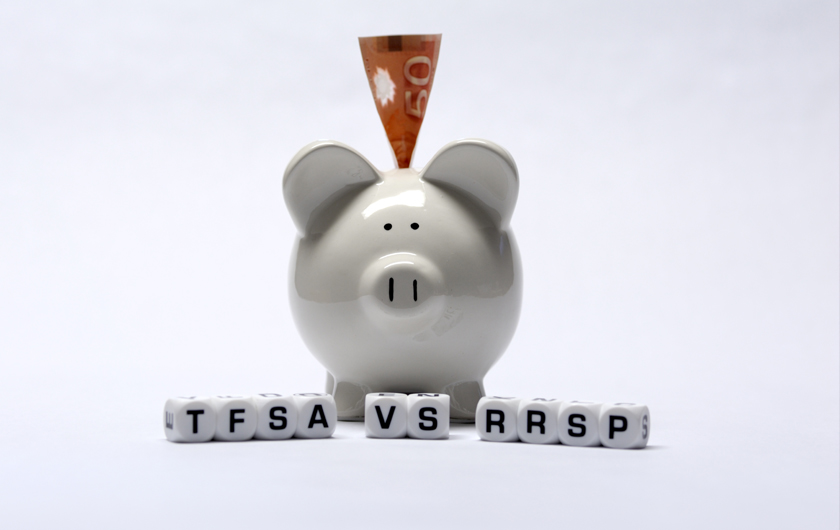Tax-Free Savings Accounts have proved a great success; now an expert is proposing ways to improve on a good thing
By Olev Edur
The good news is that Tax-Free Savings Account (TFSA) uptake has soared—good news, because for many low-income retirees, these plans provide salvation from confiscatory (50 per cent or more) Guaranteed Income Supplement-related taxes and deductions. For others, TFSAs bestow lifelong freedom from the government’s grasp of at least a chunk of their savings.
Nevertheless, in a paper entitled “TFSAs: Time for a Tune-Up,” Alexandre Laurin, the director of research for the C.D. Howe Institute, has a few suggestions for making a good thing even better.
Laurin found that since their inception in 2009, TFSAs have experienced “phenomenal growth in popularity.” By 2016, the fair-market value of all investments held within TFSAs reached $233 billion, or the equivalent of one-fifth of all assets accumulated over many decades in RRSPs, RRIFs, and LIRAs (locked-in retirement accounts, which are derived from pension plans).
“In 2016, a total of $55 billion was contributed to TFSAs, compared with $42 billion to RRSPs,” Laurin writes. “Annual TFSA contributions have exceeded those to RRSPs since 2013.” And while more current TFSA statistics are not yet available from Canada Revenue Agency (CRA), it’s reasonable to assume that this trend has continued unabated—all the factors that made these plans so popular still apply.
Laurin also found that while growth in TFSA usage was spread among all age cohorts, it was highest among those aged 65-plus: “The growth of TFSA contributions was even higher at older ages, reaching 8.4 per cent per year [per contributor] on average for 45- to 64-year-olds and 9.6 per cent for those 65 or older…more than double the rates of increase of RRSP contributions.”
Indeed, Laurin found the average TFSA contribution among those aged 60-plus was $9,019 in 2016, considerably more than the $5,500 limit for that year. In other words, having realized the value of these tax-sheltering vehicles, many retirees were making use of the cumulative feature of TFSAs (see box, page 40) to catch up from previous years of low or no contributions.
“All evidence points to TFSAs being very popular among retired seniors,” Laurin concludes. “Each year, about a third of all tax filers aged 60 or older contribute to a TFSA…. Building on these early successes, TFSAs could be made even more useful for lower-income retirement savers and for seniors in their retirement years by making a few changes.”
Specifically, Laurin makes five recommendations:
1) Allow life annuities within a TFSA.
Laurin points out that while RRSP funds can be used to purchase annuities, thus sheltering from tax the interest earned by the annuity, annuities cannot be bought with TFSA funds. Someone wanting to buy an annuity with TFSA money would have to withdraw the funds first, at which point the interest on the money withdrawn would be taxable.
“The purchase of an annuity, which provides a guaranteed periodic payout for life or a fixed term, provides income protection for longevity in retirement,” Laurin writes. “The federal government should amend the legislation to make it possible to buy annuities within a TFSA.”
2) Permit a surviving spouse to use the deceased’s unused TFSA contribution room.
When an RRSP-holder with unused contribution room dies, the surviving spouse is allowed a certain period of time in which to apply that unused room to his or her own account. No such spousal provision exists for TFSAs.
“Permitting the surviving spouse, who is the successor or the beneficiary of the deceased’s TFSA, to utilize the unused TFSA contribution room of the deceased spouse would encourage more savings at a critical time for spouses,” Laurin argues, “helping them to financially prepare for living longer than they may anticipate and facing long-term-care costs.”
3) Create a new “tax-free pension account.”
While this may be more beneficial to younger taxpayers than to seniors, Laurin proposes a tax-free pension account—what he dubs a “TFPA”—separate from but with the same tax-free accumulation and withdrawal features as TFSAs, perhaps with a limit on early redemptions. “Because of its pension nature, this new account would be entirely separate from TFSAs,” he suggests. “TFPAs would be available to everyone, although they would be particularly geared to the needs of low-to-mid-income workers.”
4) and 5) Resolve Canada-US tax issues.
Laurin cites two problems relating to the cross-border treatment of TFSAs. First, under the Canada-US tax treaty, RRSP income is taxed in the United States only upon withdrawal, as is the case here, but TFSA growth is not sheltered from tax south of the border. “This has the effect of discouraging Canadian tax residents who are also US citizens and tax residents, and dual citizens, from holding a TFSA,” he notes.
The second issue relates to US withholding tax on dividends paid to TFSAs. An exemption to withholding taxes on RRSPs exists in the tax treaty, but no such exemption exists for TFSAs.
“While this may be easier said than done, the federal government should make every effort possible to resolve these two US tax irritants,” Laurin suggests.
“These reforms, building on the early successes of TFSAs,” he concludes, “would encourage the continued growth of TFSAs and their ability to reach their objectives.”
Photo: iStock/scyther5.
The Basic TFSA Rules
Tax-Free Savings Accounts (TFSAs) are in some senses the opposite of RRSPs. While both are retirement-savings vehicles, you get no tax deduction for your contributions to a TFSA, whereas you do for RRSP contributions. And unlike RRSPs, you pay no tax on TFSA withdrawals. In fact, TFSA withdrawals aren’t considered income at all, so they don’t affect one’s entitlement to income-geared government benefits, notably the Guaranteed Income Supplement but also other federal and provincial programs and tax credits.
As with RRSPs, income and capital gains derived inside a TFSA are sheltered from tax, so your earnings compound tax-free. But unlike RRSPs, TFSA money will remain untaxed forever, meaning that you get a tax exemption as opposed to a tax deferral. And if you withdraw money from a TFSA, you can replace up to the same amount the following year (or later), in addition to your normal contribution room.
If you have a high income now and will have a lower income in retirement, RRSPs can be advantageous because contributions now will earn a deduction at a high tax rate, but withdrawals later may be taxed at a lower rate. Nevertheless, TFSAs constitute a useful adjunct even for high-income Canadians, providing tax-free cash later in life.
The TFSA contribution room for 2020 is a maximum of $6,000 per person (the annual limit is indexed to inflation in $500 increments), and contribution room is cumulative—any unused contribution room from previous years can be carried forward indefinitely. Since the introduction of TFSAs in 2009, the cumulative total allowable contribution has grown to $69,500. That’s how much you could contribute right now if you’ve never before contributed to a TFSA.
Finally, the roster of investments eligible for purchase within a TFSA is much the same as for RRSPs and includes company shares, mutual funds and ETFs, and bonds and GICs, among other securities.






